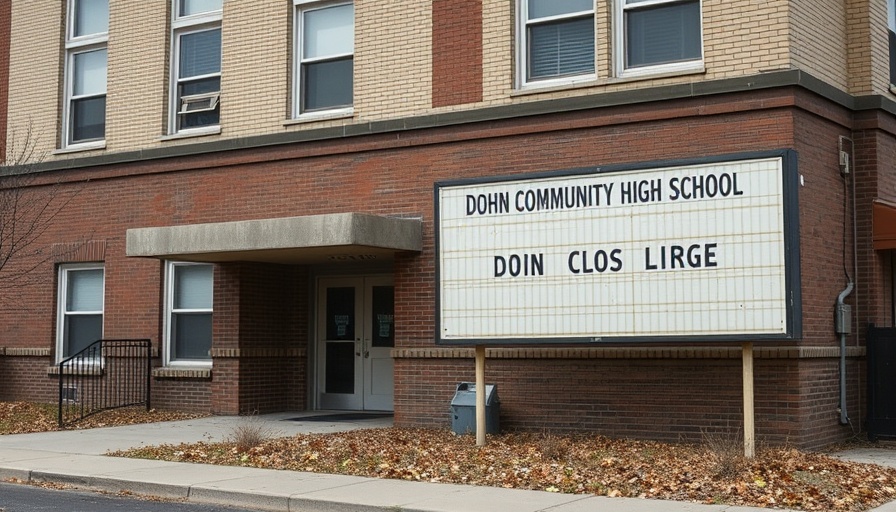
A Sudden Closure: The Impact on Almost 600 Students
The unexpected closure of Dohn Community High School sent shockwaves through the Cincinnati community, directly affecting nearly 600 students and their families. Students were enjoying their spring break when they received an email, with details so shocking that many were unprepared for the sudden change. "We are saying our farewell among the staff," shared Ashley Morris, Dohn's academic advisor, as she reflected on the school's legacy of second chances for students with challenging backgrounds.
Chaos in Enrollment: Families Seek Immediate Solutions
The abrupt notification that classes were ending immediately on Monday left many parents, like Ronisha Knox, scrambling for alternatives. Knox expressed her frustration, "We thought it was in June. It’s upsetting." As families hurried to find new schooling arrangements, they felt a heavy weight of uncertainty regarding their children's academic futures, especially those about to graduate. Cincinnati Public Schools quickly organized a special enrollment day, demonstrating a community commitment to mitigate the fallout from Dohn's closure.
Relief Amid Uncertainty: New Beginnings for Students
While many parents faced anxiety about the transition, some, like Tanisha Little, found a glimmer of hope. Little successfully enrolled her three children into new schools, stating, "It's really helpful that they did it. I’m glad they did it now." This proactive approach by Cincinnati Public Schools aims to ensure that students find stability amidst the upheaval, reinforcing the importance of community support during difficult transitions. However, complexities remain regarding document retrieval from Dohn, which could affect how quickly and effectively the school enrollment process can be completed.
Graduation Worries: Ensuring Seniors Meet Requirements
For the seniors at Dohn, the pressure to graduate on time looms large. Discussions between CPS Superintendent Shauna Murphy and Dohn's CEO William Geraghty emphasize a commitment to guide seniors through this challenging transition. Geraghty pointed out that navigating graduation pathways requires individualized attention to meet each senior’s unique needs. This aspect underscores the need for collaboration among schools and a thorough understanding of academic records to keep students on track for graduation.
Community Response: Collaboration is Key
The swift actions from Cincinnati Public Schools demonstrate a wider commitment to education for all students. As families navigate this difficult period, community resources and district support can make a profound difference. The administration’s focus on actively communicating with Dohn families reflects a proactive stance aimed at minimizing the dislocation caused by sudden changes.
The Bigger Picture: Understanding Impacts on Education Accessibility
The abrupt closure of Dohn Community High School is not just a local issue; it raises significant questions about educational accessibility in urban areas. Schools play a critical role in communities, offering more than just academics. They provide stability, resources, and a sense of belonging. The challenges faced by Dohn highlights the importance of robust support systems that are vital for students at risk of educational disruption.
As the community adjusts to these developments, it’s essential to consider what measures can prevent similar occurrences in the future. Open dialogues among educational leaders, policymakers, and families can help foster an educational environment where students can thrive without fear of sudden changes.
 Add Row
Add Row  Add
Add 




Write A Comment